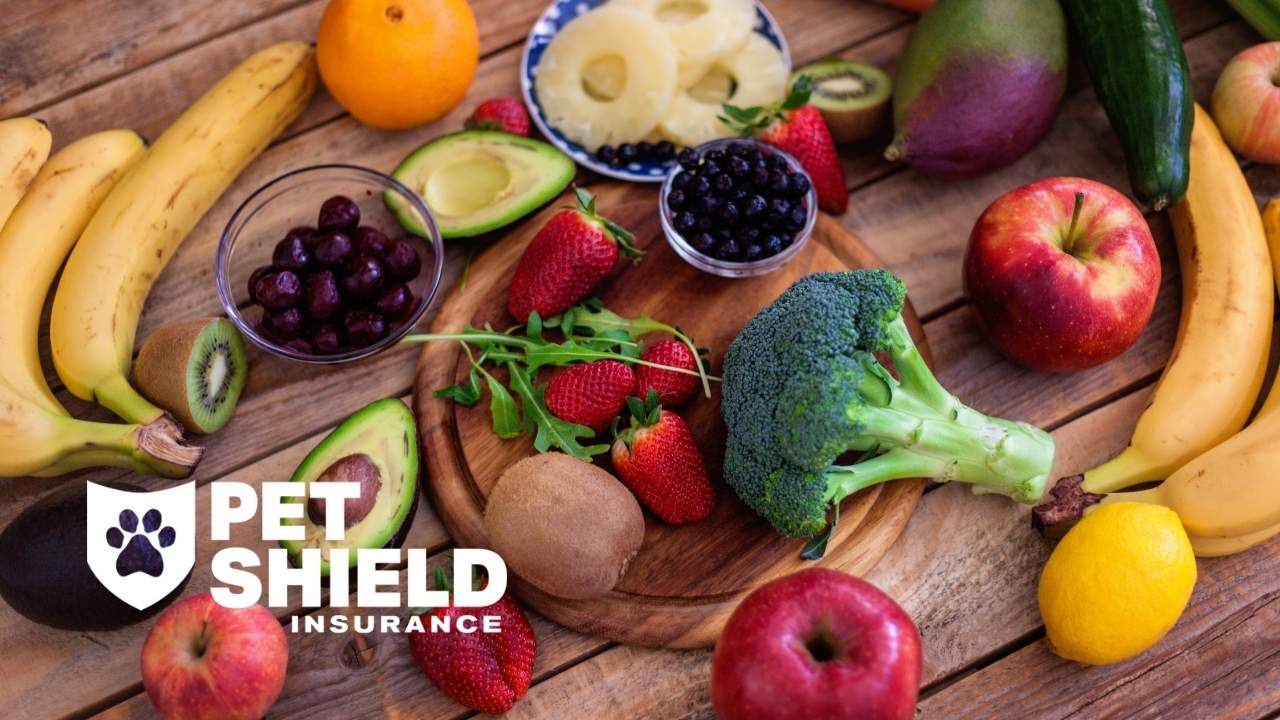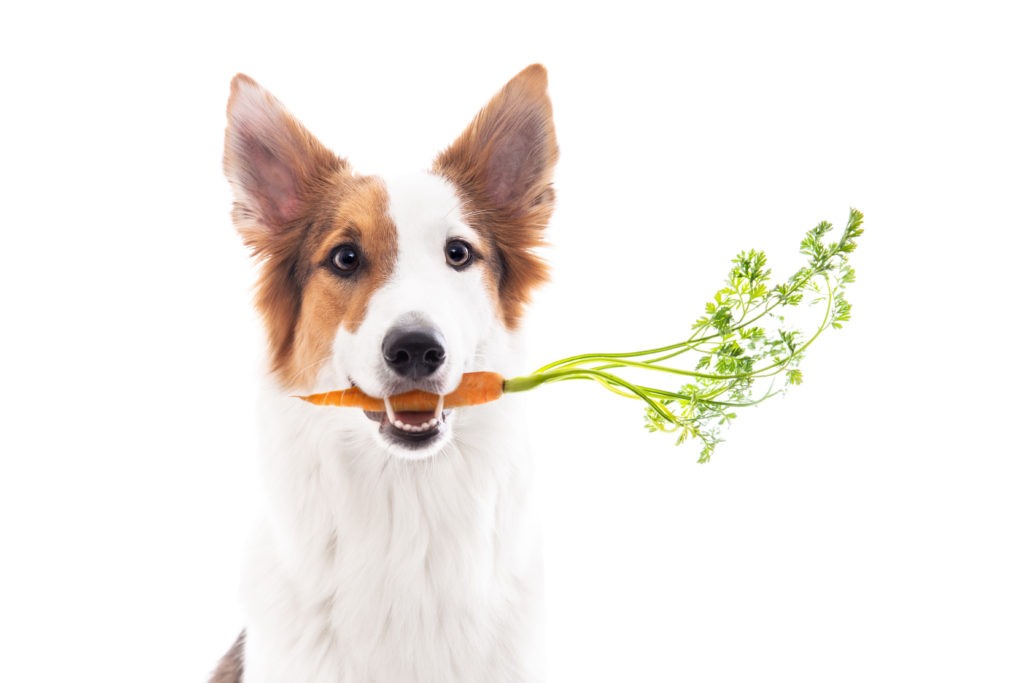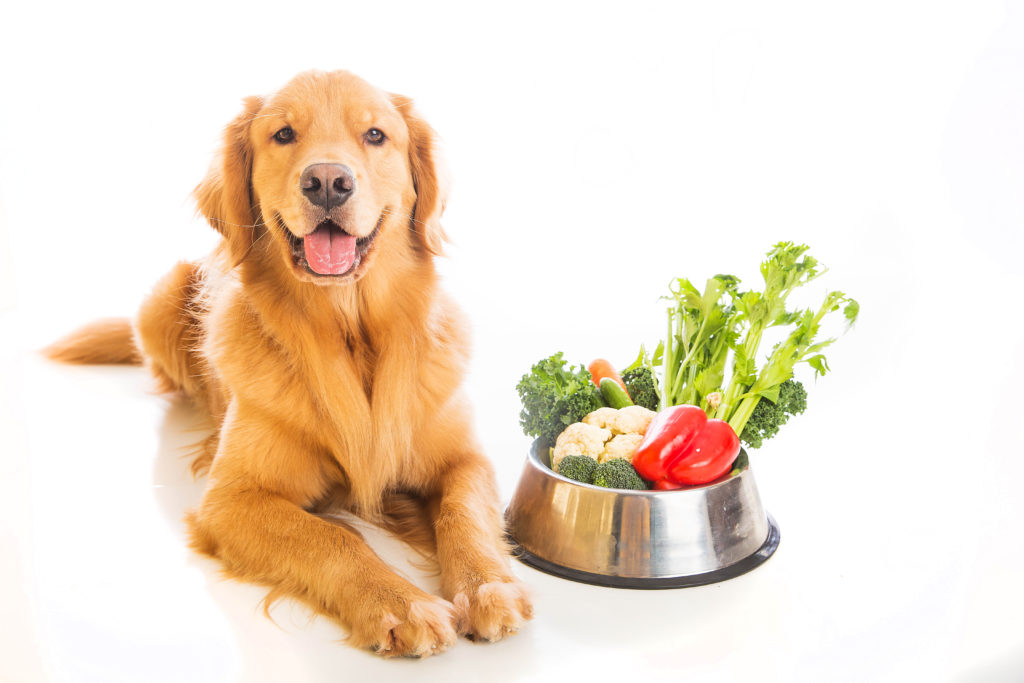
Healthy... or deadly?
As pet owners, we’re very careful about what our pets eat. Nutrition is so important, but it’s more than that. Our pets’ health and safety is paramount to us, and certain types of food are very toxic for them. Research is key for pet owners. And luckily, many pet food companies highlight their nutritional benefits.
But we shouldn’t be too trusting of pet food companies without knowing the full list of ingredients in their food. This is a pro for feeding the right fruits and vegetables to your pets. You know exactly what they’re eating. A lot of the fruits and vegetables we eat can also be given to our pets. However, some can be dangerous and should be avoided entirely. We’re here to help you navigate through what’s safe, and what you should avoid giving your pet.
Why should I give my pet fruits & veggies?
Your pet’s diet should be nutritionally balanced. Adding fruits and vegetables will help give them plenty of essential nutrients, vitamins, and minerals, to help boost their immune system and keep them strong and healthy. Pet treats can be fairly high in calories, so fruits and vegetables are often a healthier alternative.

Fruit
We all know that smaller pets like rabbits and guinea pigs love fruit and veggies. The same goes for your cat or dog! But be careful. Fruits are higher in sugar than vegetables and should be given in moderation, especially for overweight pets. It’s also important to wash all fruits, and remove inedible skins, seeds, and pits before feeding to your pet.
The following fruits are safe for your dog or cat to eat:
Apples are high in fiber and low in fat–an ideal snack for pets with a lower metabolism. They’re also packed with vitamins A and C, helping maintain healthy bones and tissue. If you’re feeding your pet apples, do so in moderation, and make sure the core and seeds are removed as they can be harmful.
Apricots are full of potassium and beta-carotene which helps fight against cancer. Again, make sure your pet doesn’t eat the poisonous pit, stem, or leaves.
Bananas are a great source of potassium which supports heart and kidney functions. They’re high in sugar content, so they should be given to dogs in moderation. If you cut them into small slices, they make a good occasional treat.
Like their benefits for humans, blueberries help prevent cell and tissue damage because of their antioxidant properties. They’re also a good source of fiber and Vitamin C, and may help lower the chances of your pet developing urinary tract infections.
Another superfood to help fight urinary tract infections is cranberries. Vitamin C, fiber, and manganese make cranberries a healthy snack for cats and dogs, though not everyone enjoys the taste. You can give your pet raw, cooked, or dried cranberries, but avoid cranberry sauce and juice, as they’re way too high in sugar.
Mangoes are packed full of vitamins. Give your pet small pieces with the skin removed. This will allow for easier digestion. Like all pitted fruits, remove the hard middle pit before giving to your pet, as it’s very toxic.
Pears are full of vitamin C, vitamin A, and fiber, and make a great occasional snack for cats and dogs. Give your pet small slices in moderation to help promote anti-cancer properties. Pear seeds are also contain toxic to pets and should be removed.
Nutrients found in strawberries help strengthen the immune system and slow issues related to aging, which makes them another great occasional treat.
Watermelon is pretty much all water, so it ‘s useful for keeping your pet hydrated. It also contains Vitamins A, C, B-6, and potassium to help maintain healthy muscles and nerve function.
Stay away from:
- Cherries are toxic to cats and dogs
- Grapes and raisins can cause kidney damage
- Citrus fruits like lemons, limes, and grapefruit can cause an upset stomach.

Vegetables
Vegetables are nature’s health supplements, for people and for pets! Consider steaming or boiling cruciferous veggies like cauliflower and cabbage. They’re way easier for pets to digest when cooked. Cats may require vegetables to be pureed. If you want, you can feed them a vegetable baby food, as long as it doesn’t contain onions or garlic.
The following vegetables are suitable for your dog or cat to eat:
Asparagus is high in fiber, has a lot of vitamins, and is a great source of potassium. Make sure to cut asparagus into bite-sized pieces that have been cooked and softened through cooking to avoid choking and make digestion easier. Dogs may been more keen to eat asparagus than cats will.
Cabbage can help digestion, fighting cancer, and improving skin and fur health for both cats and dogs. Try to shred cabbage over food, and give in moderation to avoid harming to your dog’s thyroid gland. Cook cabbage beforehand to allow for easier digestion.
Carrots are low in calories, high in fiber, and chewing them is great for your pet’s teeth. They’re a great treat, especially for dogs!
Cauliflower’s vitamins and antioxidants can help older pets with arthritis. Its fiber supports digestive health, but too much can lead to an upset stomach. Serve plain, small bites without the stem or leaves.
Celery is low in calories and is full of nutrients and antioxidants. Like watermelon, it has high water content and helps to keep your pet hydrated AND freshen their breath.
Cucumbers contain very little carbohydrates or fats, which is perfect for overweight pets. Cucumber can also help lower blood pressure, as well as freshen their breath.
Green beans are a great source of protein and iron. Sodium-free green beans are a healthy snack that helps pets slim down.
Lettuce adds water and fiber to your pet’s diet, keeping them full and hydrated. Cut lettuce into very thin slices to make it easy to eat. Like cabbage, you can place it on top of your pet’s regular food.
Peas have vitamin B, thiamin, and potassium which helps boost energy levels and improve bone health. Frozen, thawed, steamed, or mashed, peas can make a nice, healthy snack.
Pumpkin is full of fiber and can help pets suffering from constipation or diarrhea. Pumpkin is also rich in vitamins and minerals and is a great source of water. Do not feed your pet pumpkin pie filling, as it contains added sugar and spices.
Spinach is a super food and contains almost every vitamin and mineral. It may help in all areas of your pet’s health. Don’t give large amounts to your pet if they have kidney disease, as it can exasperate problems with their kidneys.
Just like the benefits of pumpkin, sweet potato offers dogs and cats fiber, water, and nutrients that help with digestive problems. Sweet potato offers even more nutritional value, containing vitamins, thiamine, niacin, and even copper.
Zucchini is a good source of vitamin C, magnesium and potassium. It can also help protect pets from infections, cancer, and cardiovascular diseases. Shredding it on top of pet’s food is an easy way to incorporate it into their diet.
Stay away from:
- DO NOT feed your pet onions or garlic. They are toxic for pets and cause damage to their red blood cells when cooked, raw, and even in onion powder.
- Rhubarb and wild mushrooms are toxic to pets
- Avoiding corn is wise, as it’s a common allergen for pets
Adding new foods to pet diets
Introducing new foods into your pet’s diet may cause stomach issues like vomiting or diarrhea. Proceed with caution, and gradually introduce small amounts of one new fruit or vegetable at a time, so you can notice any changes in your pet’s health. It’s also important to note that, just like with people, every dog is different. So is every cat. Your pet may have a sensitive stomach. Research your pet’s breed to find useful information about specific foods that may cause irritation.
Food allergy symptoms include sickness, diarrhea, and skin problems. Your vet will be able to determine if your pet has an allergy, and can offer advice on how to proceed.
MODERATION IS KEY. Even if the fruit or vegetable is considered safe. If your dog/cat is being treated by a veterinarian for an underlying medical condition, you should consult them before starting any new fruit or vegetable.
